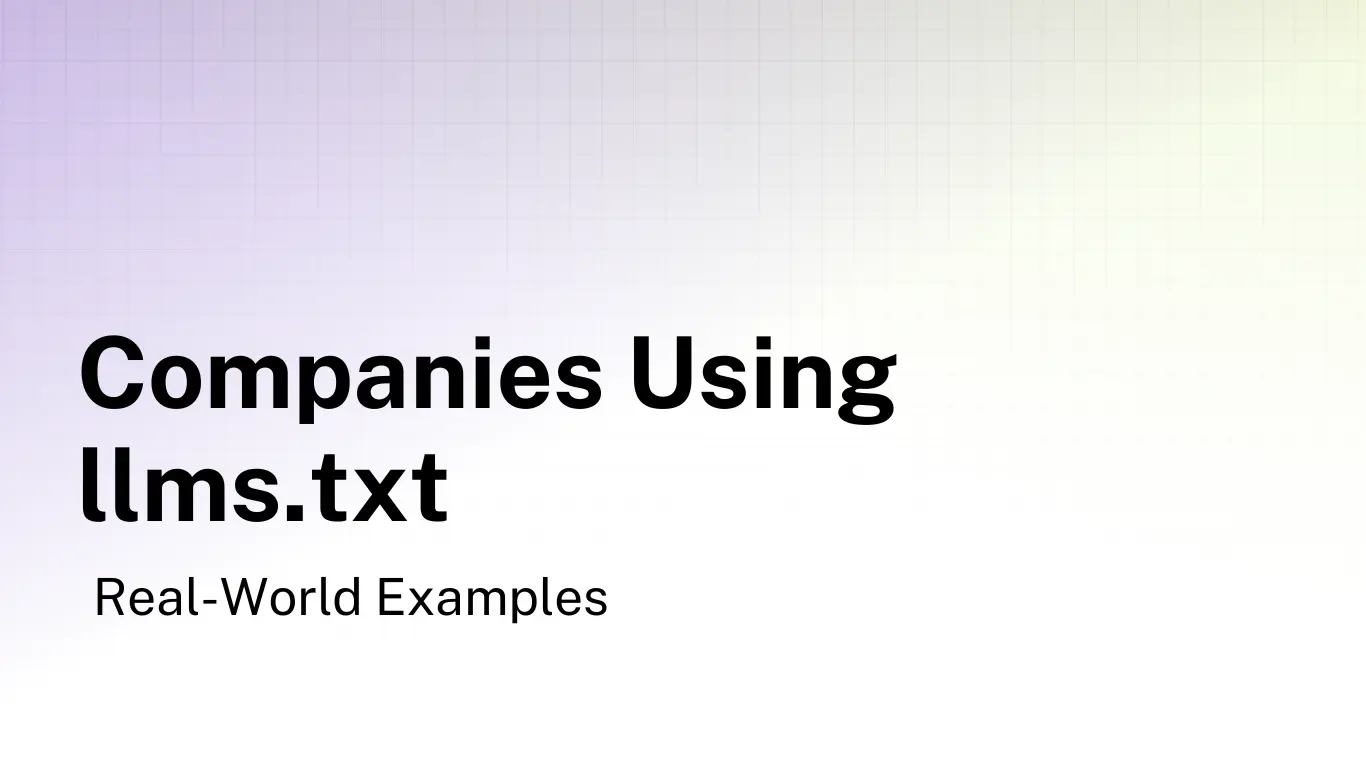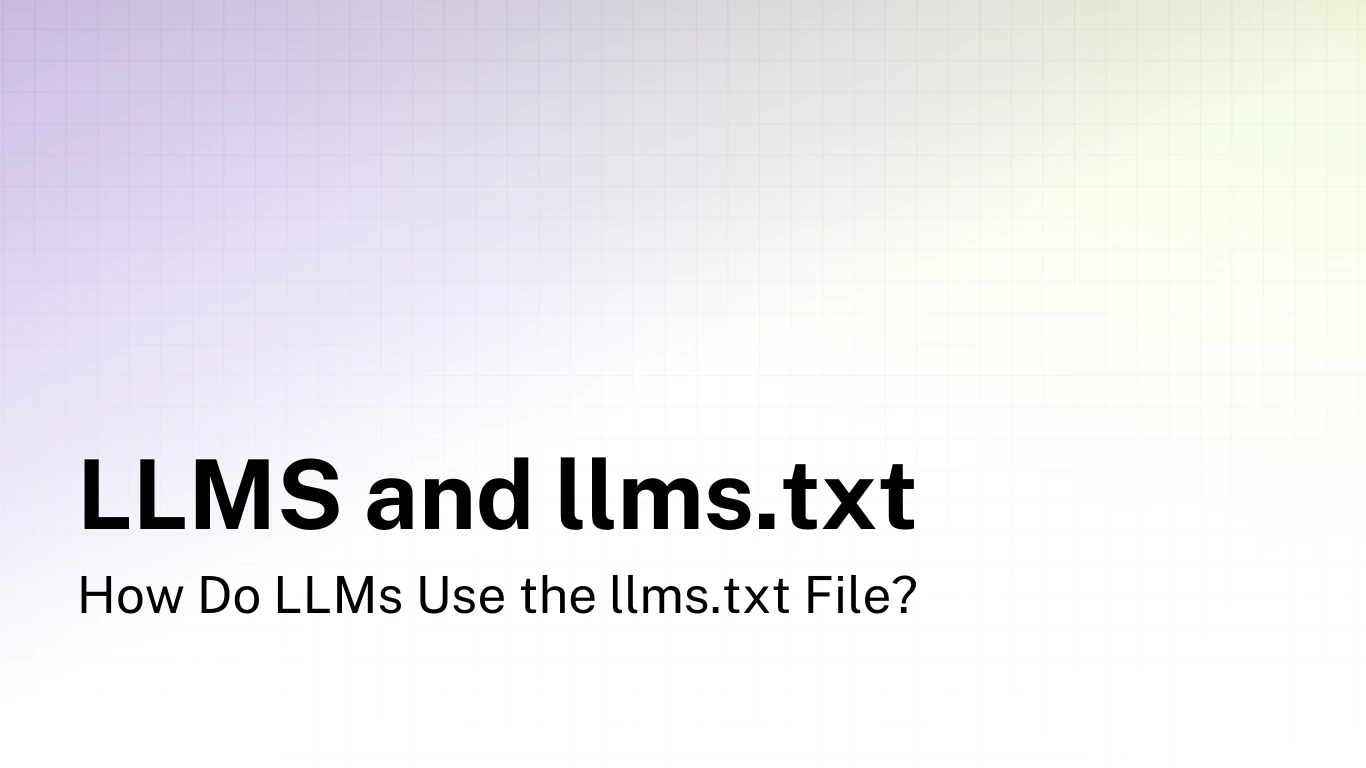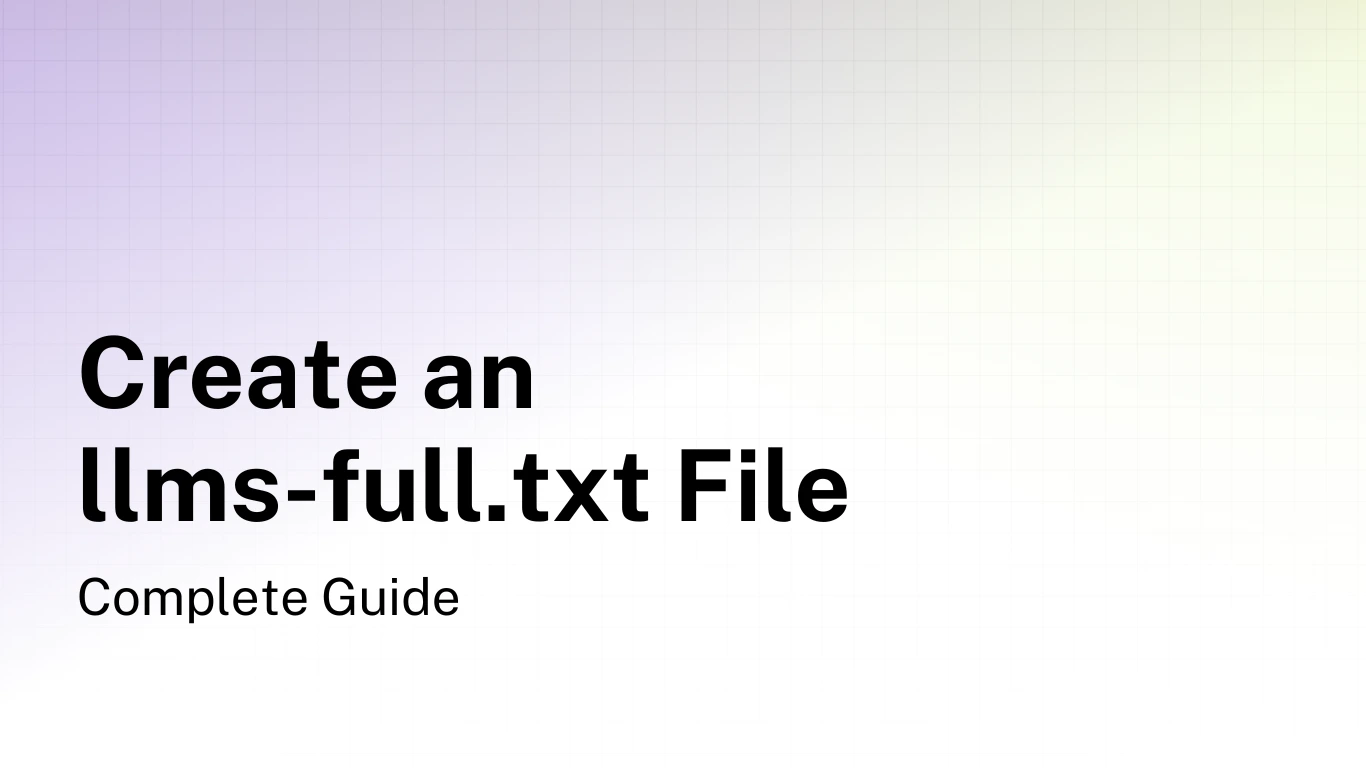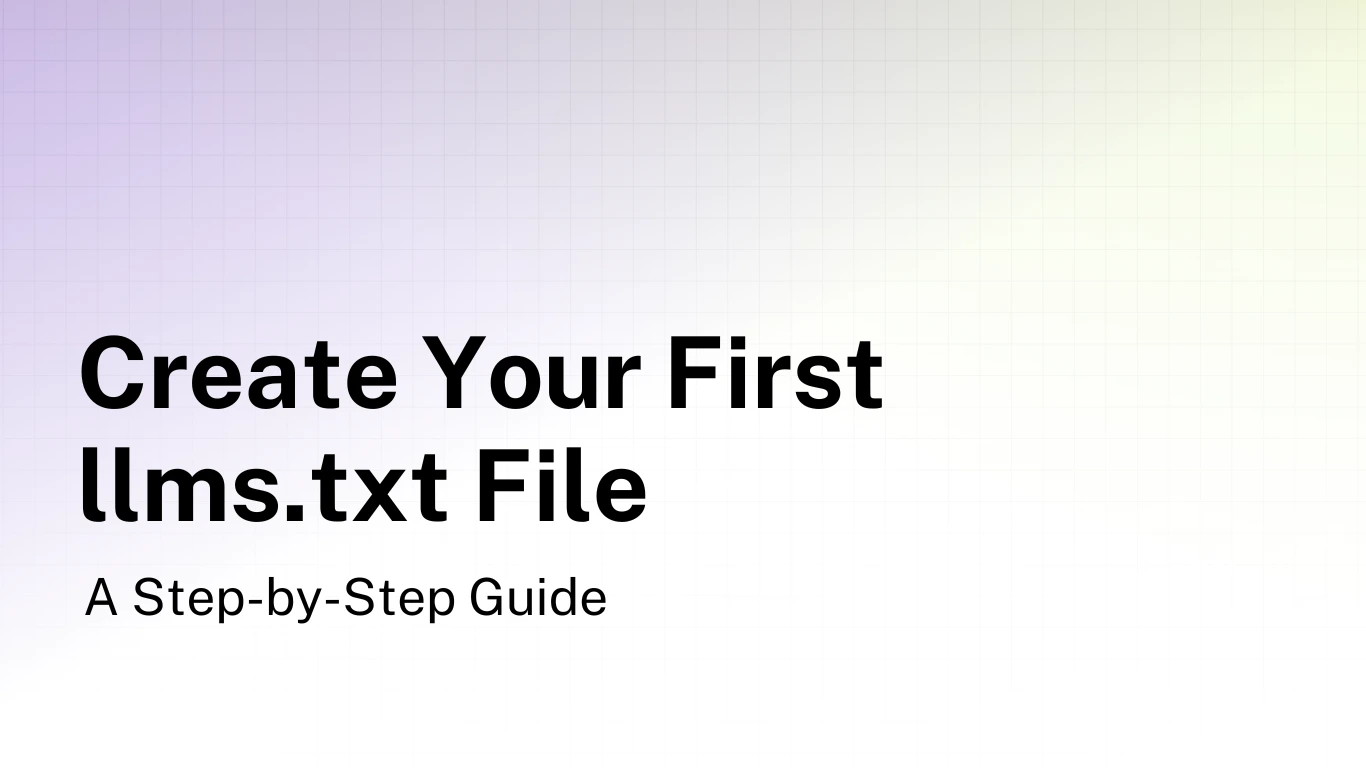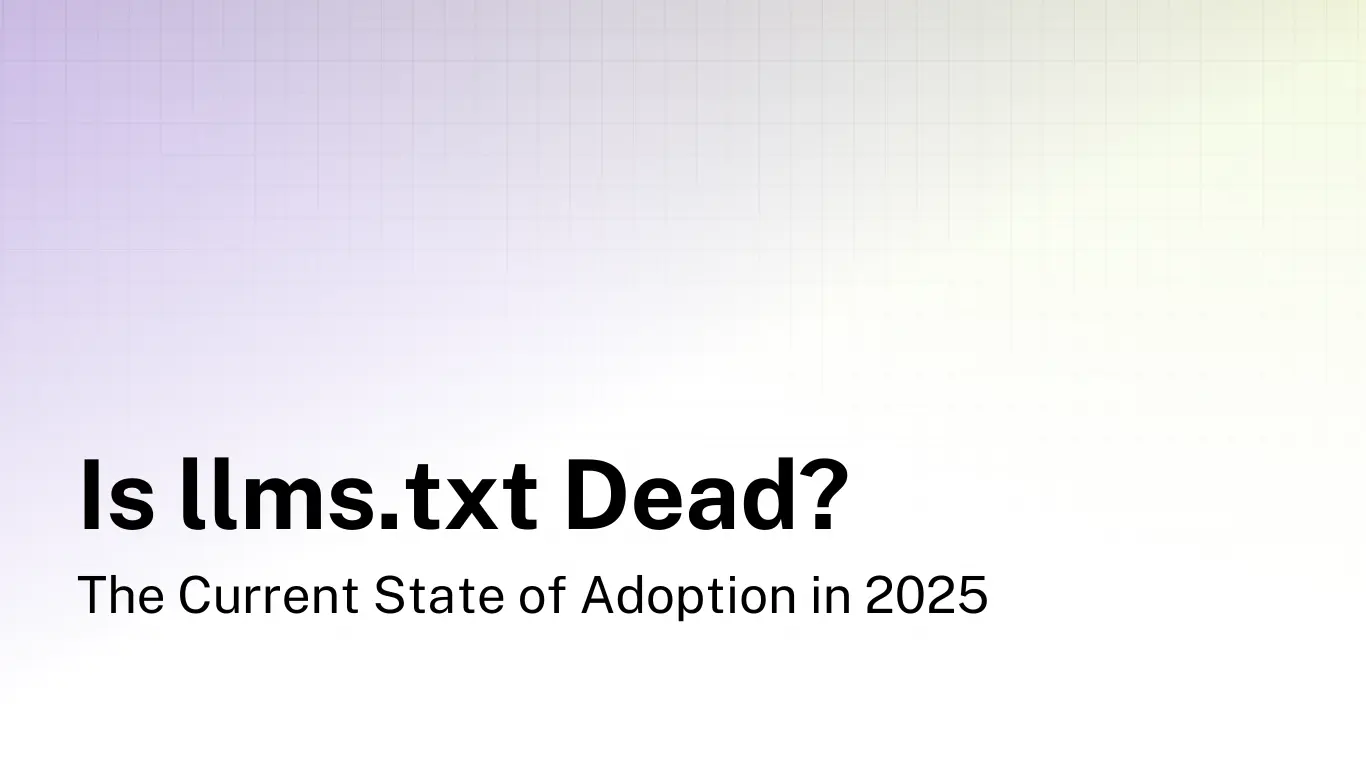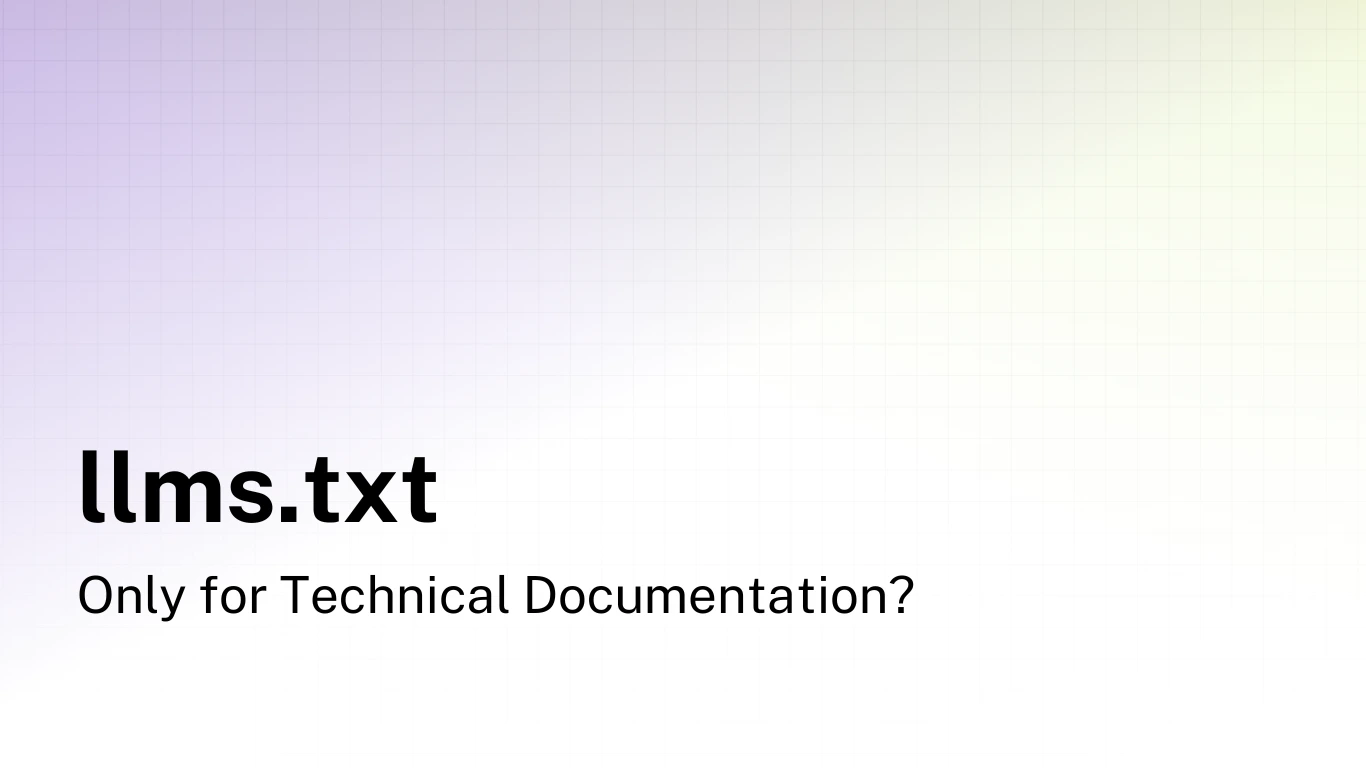What Are llms.txt Files? The New Standard for AI-Friendly Content
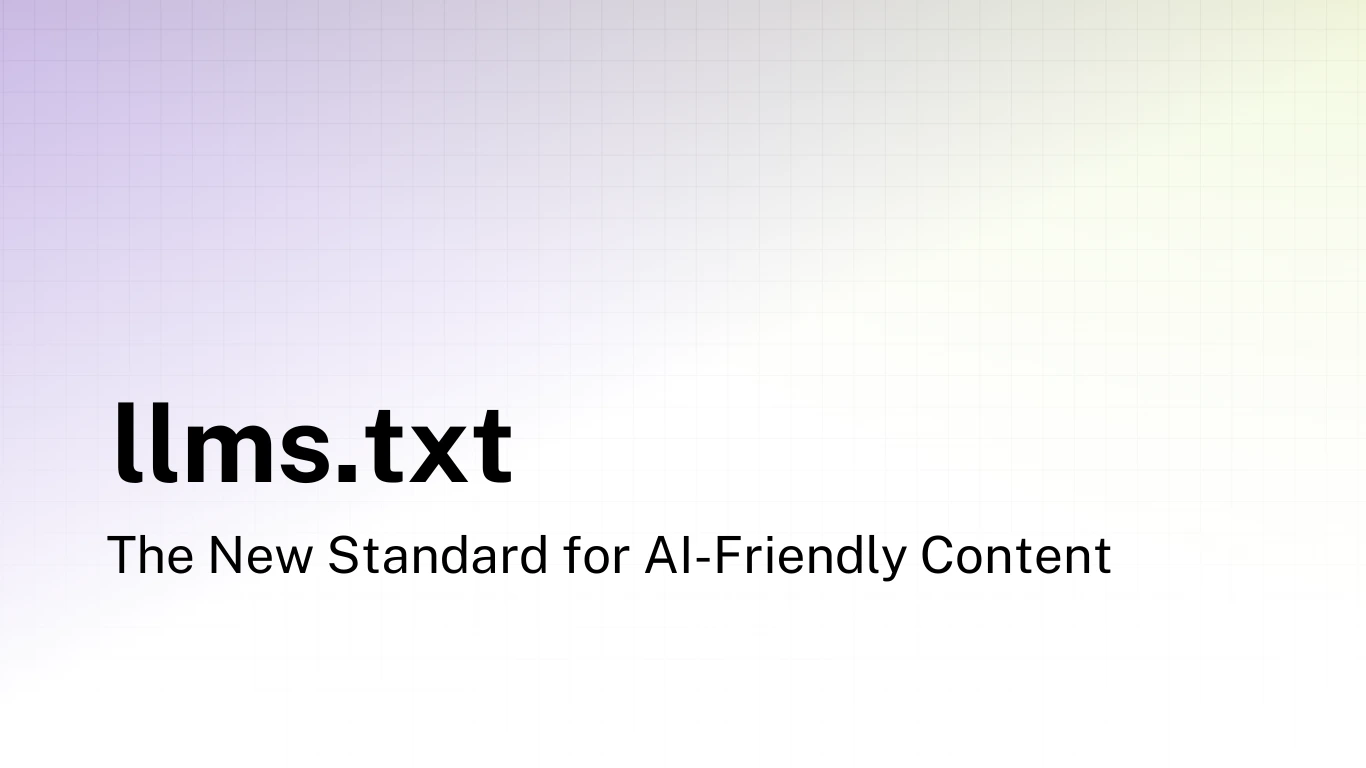
As someone who builds websites and works with AI systems daily, I've experienced firsthand the challenges of making online content truly accessible to large language models.
The problem is simple: while websites are designed for human eyes, AI language models struggle with the complexity of HTML, JavaScript, and sprawling site architectures. That's where llms.txt comes in – a simple yet powerful solution that's quickly becoming the new standard for AI-friendly content.
Here, I'll explain what llms.txt files are, why they matter, and how you can use them to make your website more AI-friendly.
What is an llms.txt File?
An llms.txt file is a specially formatted markdown document that lives at the root of your website (e.g., example.com/llms.txt). It serves as a curated guide for AI language models to understand your website's content more efficiently.
Think of it like a sitemap.xml file, but specifically designed for language models rather than search engines. While a sitemap simply lists all pages, an llms.txt file provides:
- A concise summary of your website or project
- Organized sections with relevant links to more detailed content
- Markdown-formatted information that's easy for both humans and AI to read
- Optional sections that can be included or excluded depending on context needs
The Basic Structure
The llms.txt file follows a specific structure:
# Website or Project Name
> A brief summary of what your website or project is about. This should capture the essential information.
Additional context or details about your project can go here.
## Main Documentation
- [Getting Started Guide](https://example.com/guides/getting-started.md): Learn the basics
- [API Reference](https://example.com/api-reference.md): API documentation
## Additional Resources
- [Examples](https://example.com/examples.md): Code examples and use cases
## Optional
- [Community Guidelines](https://example.com/community.md)
- [Change Log](https://example.com/changelog.md)
This format makes it easy for LLMs to quickly grasp what your website is about and find the most relevant information without having to process unnecessary elements like navigation menus, advertisements, or complex JavaScript.
Why llms.txt Matters: The Context Window Challenge
Large language models face a significant constraint: they can only process a limited amount of text at once (known as their "context window"). When an AI attempts to understand a website, it has to process all the HTML, CSS, JavaScript, navigation elements, footers, and other non-essential content – wasting precious context space.
For example, a typical documentation page might contain:
- 20% actual content
- 80% navigation, styling, scripts, and other elements
With llms.txt, you can provide:
- 100% relevant content in a clean, markdown format
- Organized links to the most important information
- A way for AI systems to efficiently use their limited context window
This is particularly valuable for technical documentation, APIs, and other complex information that AI systems might need to reference when helping users.
llms-full.txt: The Complete Package
While llms.txt provides structure and navigation, there's also a companion concept: llms-full.txt. This is a file containing all your documentation in one place, making it even easier for AI systems to access your complete content.
The llms-full.txt file is especially useful for:
- AI assistants that need to answer detailed questions about your product
- Development environments that integrate with AI coding assistants
- Research tools that need more detailed information about a topic
By providing both files, you give AI systems the flexibility to either navigate your content structure (llms.txt) or access everything at once (llms-full.txt).
How llms.txt Differs from Existing Standards
You might be wondering how llms.txt compares to existing web standards.
| Standard | Purpose | Limitation for AI |
|---|---|---|
| robots.txt | Tells search engines which pages they can/cannot crawl | Doesn't help with content structure or formatting |
| sitemap.xml | Lists all pages on a site for search engines | Doesn't distinguish between important and secondary content |
| llms.txt | Provides structured, curated content for LLMs | A new standard still gaining adoption |
The key difference is intent: robots.txt and sitemap.xml are built for web crawlers, while llms.txt is specifically designed for reasoning engines that need to understand your content.
Who Created llms.txt and Why?
The llms.txt standard was proposed by Jeremy Howard, co-founder of Answer.AI, to address the specific challenges that AI systems face when trying to understand website content.
The proposal came from a practical need: how can we help AI systems access the information they need without getting bogged down in the complexity of modern websites?
Since its proposal in September 2024, llms.txt has gained rapid adoption, with companies like Anthropic, Mintlify, and Cursor implementing it in their documentation. This growing momentum signals that llms.txt is filling an important gap in the AI ecosystem.
How to Create an llms.txt File for Your Website
Creating an llms.txt file for your website is straightforward:
- Start with the basics: Include your website/project name and a concise summary
- Organize your content: Group related information under clear section headings
- Link to markdown files: Provide links to markdown versions of your content
- Add helpful descriptions: Include brief explanations of what each link contains
- Identify optional content: Use the "Optional" section for secondary information
Remember that the goal is to make your content as accessible as possible to AI systems while maintaining a structure that's easy to navigate.
Using llms.txt with AI Chatbots
Since current AI chatbots don't automatically discover and index llms.txt files, you'll need to the following.
- Copy the URL of your llms.txt or llms-full.txt file
- Paste it into your conversation with an AI assistant
- Ask specific questions about your content
This allows the AI to have the full context of your documentation when providing answers or assistance.
How to Create an llms.txt file
Creating an llms.txt file for your website is straightforward with our free tool.
If you want to learn how to create the file yourself, read our guide on the topic: How to Create Your First llms.txt File: A Step-by-Step Guide
Conclusion: The Future of AI-Friendly Content
As AI becomes an increasingly important part of how we interact with websites and documentation, standards like llms.txt will play a crucial role in making that interaction seamless and effective.
By implementing llms.txt on your website, you're not just making your content more accessible to AI – you're preparing for a future where the distinction between human-readable and AI-readable content becomes increasingly important.
Whether you're maintaining documentation for a software library, creating content for a corporate website, or building a personal portfolio, llms.txt offers a simple yet effective way to ensure your content is ready for the AI age.
Additional Resources
- Official llms.txt Proposal - The original proposal by Jeremy Howard
- 7 Top Companies Using llms.txt - See how other websites are implementing it
- Markdown Guide - Learn more about writing effective markdown

